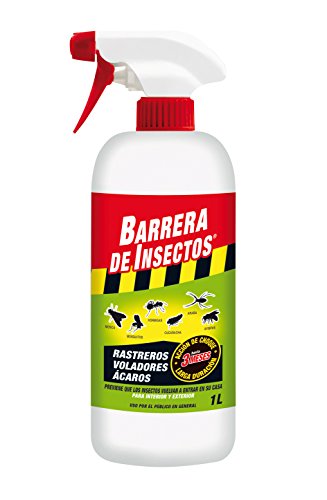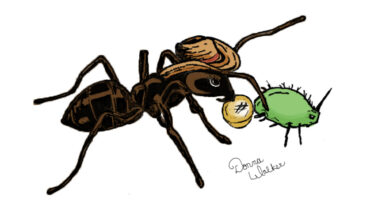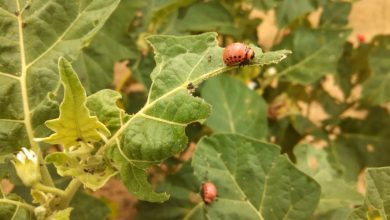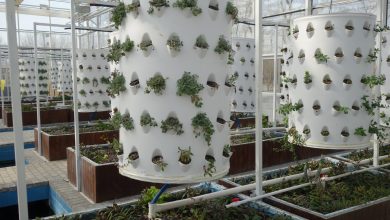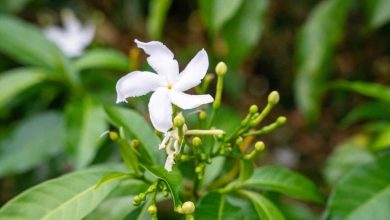Aconite: [Cultivation, Irrigation, Care, Pests and Diseases]
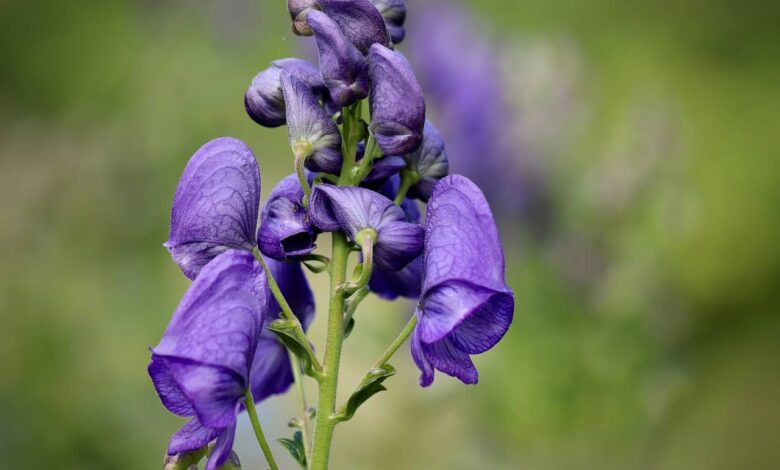
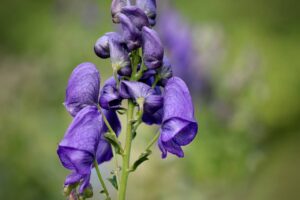 The aconite is a plant native to the Eurasian mountains. In some countries it is sown as an ornamental plant for its lush flowering and beauty.
The aconite is a plant native to the Eurasian mountains. In some countries it is sown as an ornamental plant for its lush flowering and beauty.
However, its cultivation or any type of home use is generally discouraged. It is a very poisonous plant , the most toxic in Europe.
It contains aconitine, an alkaloid that can slow down the heart, and 1 milligram is enough to kill an 80-kilogram adult due to its strong cardiotoxic and neurotoxic effect.
- Scientific name: Aconitum napellus.
- Common name: Matalobos, amapelo, napelo, anapelo, vedegambre, Jupiter’s helmet, blue flower anapelo.
- Height: 1.5 meters.
- Need for light: Full sun and shade.
- Temperature: Temperate and cold climates.
- Irrigation: Frequent.
- Fertilizer : Organic fertilizer.
What are the characteristics of aconite?
Aconite leaves are alternate, palm-shaped divided into long, irregularly shaped strips, called lacinias, 2 to 5 millimeters wide. They have a bright green color, are rigid and flexible, with a leathery appearance.
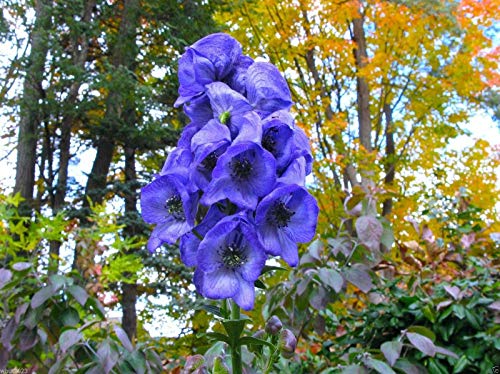
On the other hand, its flowers are zygomorphic, made up of 5 different pieces of intense blue or dark purple color. They bloom from July to October and grow to 3 to 4 centimeters in diameter and 2 centimeters high.
These are grouped in clusters at the top of the stem. The result of the aconite is about 17 mm, and consists of 3 to 5 arcuate follicles. Each follicle contains numerous small black, pyramidal and shiny seeds , between 3 and 5 millimeters.
When to sow an aconite?
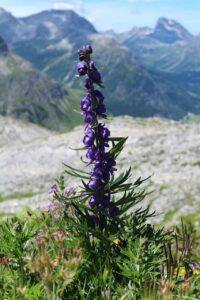 The aconite is a plant resistant to cold and frost. It can multiply by seed, indoors, during the months of January, February and March.
The aconite is a plant resistant to cold and frost. It can multiply by seed, indoors, during the months of January, February and March.
In the case of sowing outdoors, it should be done in the months of January, August, September or December.
Likewise, it can be cultivated through the roots of the plant during the months of September, October and November, in order to see them bloom during June, July and August.
It can be sown by bulb during the spring , but the humidity level in the soil must be monitored especially during the first summer.
Where to plant an aconite?
If you want to plant it in warm regions, you should find an area with semi-shade, where it is exposed to sunlight only for a few hours during the morning or at dusk.
How to prepare the land?
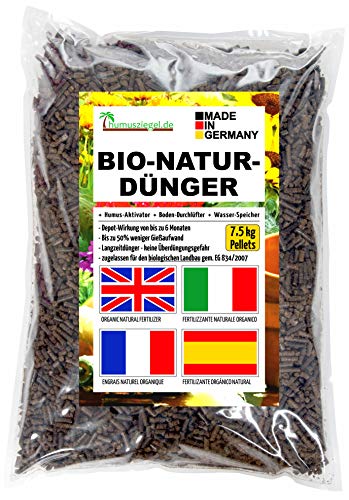
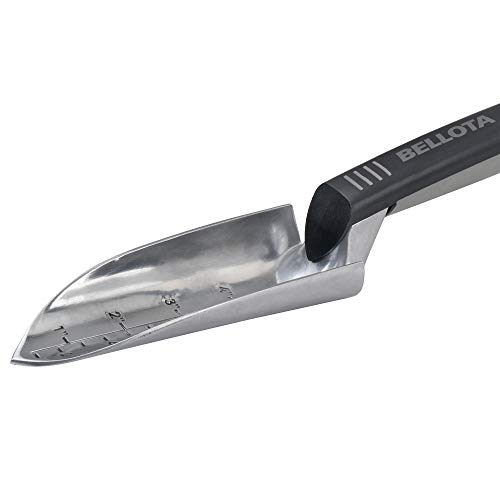
The ideal soil to grow aconite is rich in nutrients, well drained, weakly acidic, with a pH of 4.5 to 7.5. For this reason, it will be important to prepare it with manure , guano, banana or egg peels, among others. Conditioning should be practiced from the beginning of spring until the end of summer .
How do we water an aconite?
The aconite can be irrigated with rainwater or without lime. If you do not have a rain catchment system then you can use a water tank in which it rests for 1 or 2 days. This procedure will remove the chlorine and lime from the water.
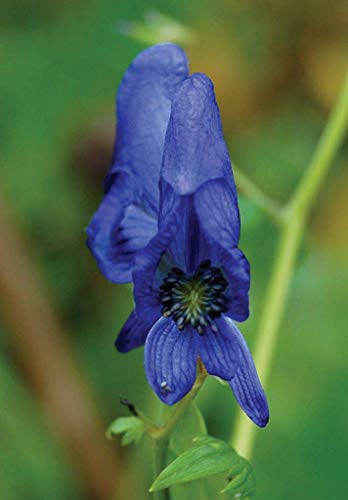
How often do we water the aconite?
Irrigation can decrease and take place every 5 to 6 days during the other months of the year.
How to sow an aconite step by step?
The aconite can spread through various methods: by seed, division and root cuttings . Below are the steps to grow it by seed and by root division.
By seed
- Place the seeds in a container or in a plastic bag with damp sand, preferably mature seeds due to their long dormancy and low germination rate.
- Place the container in a humid and warm environment, between 16ºC and 22ºC, for a period of 2 to 4 weeks.
- Change the container to a cold place, preferably in the refrigerator, at temperatures between -4ºC and 5ºC, for a period of 5 to 6 weeks.
- After the recommended time, remove the container from the cold and keep it at room temperature, checking regularly if any seeds have germinated.
- Once the seedling has grown sufficiently, place it in a hole twice its size and enrich the area with organic fertilizer.
- Water abundantly without saturating the substrate.
By root division
- Divide the root extracted from the aconite into 5-centimeter sections along with part of its root system.
- Transplant the roots to the desired area, in holes slightly larger than the plant segment , 5 centimeters deep, leaving a separation of 5 to 10 centimeters between them.
- Water the area to compact the substrate.
This process can be done every 4 to 5 years during the fall , when flowering slows down.
What care does aconite need?
The use of gloves is recommended during cultivation and handling of aconite to avoid absorption of the toxicity of the plant or its roots through the skin.
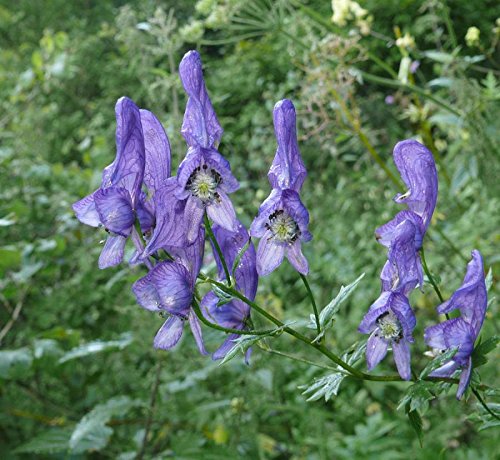
Regarding maintenance, aconite does not need demanding work. However, fertilization work can be done during the spring, as well as the purification of withered flowers or buds to prolong the flowering period.
What pests and diseases affect aconite?
Aconite is rarely affected by verticillosis (Verticillium) or powdery mildew ( Leveillula taurica) . Also, their roots can rot from stagnant water.
